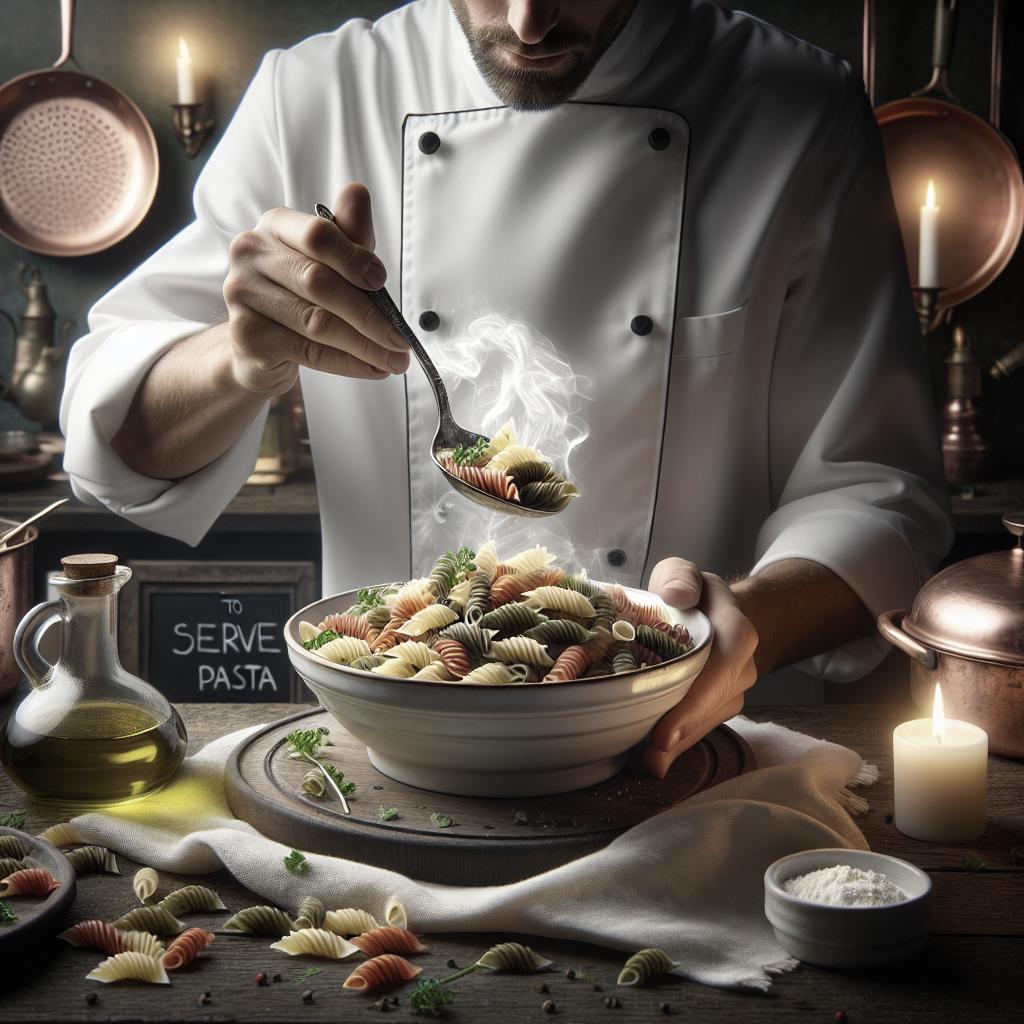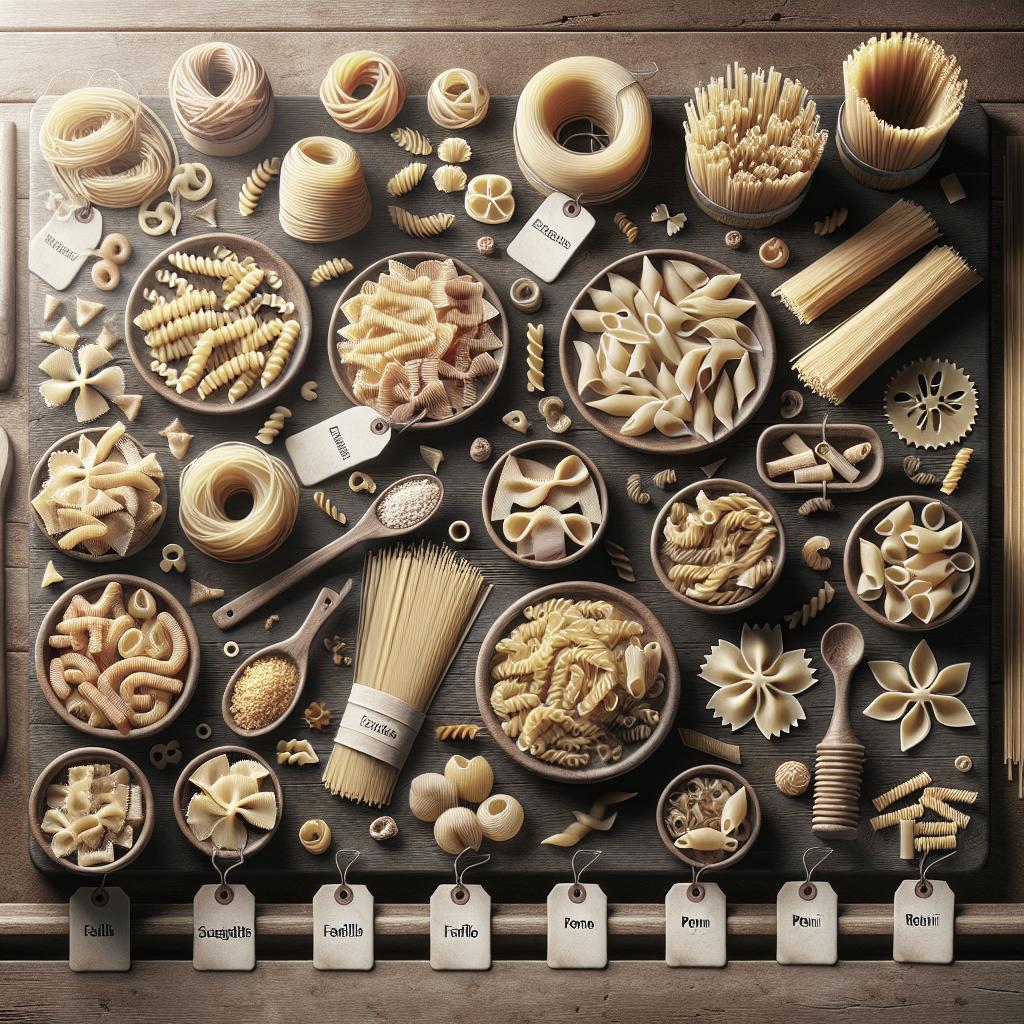“`html
Mastering the Art of Serving Pasta
Serving pasta might seem straightforward, yet there’s an art to achieving that perfect balance of flavor and presentation. In this blog post, we delve into the essentials: from picking the right pasta for your sauce, ensuring appropriate portion sizes, to expert tips on cooking and combining different pasta types and sauces. We also discuss the art of adding cheese at the right moment and some key table manners to keep in mind. Whether you’re a novice or an experienced cook, these tips will help you elevate your pasta servings to restaurant-quality standards.
Pick the Right Pasta for Your Sauce
Pasta comes in various shapes and sizes for a reason, often intended to complement specific types of sauce. Long pastas like spaghetti, linguine, or fettuccine are best suited for thin, olive oil-based sauces. These pastas can elegantly coat each strand, offering a seamless blend of flavors and textures.
On the other hand, if your sauce is chunky and hearty, like a rich Bolognese or a chunky vegetable sauce, consider using pasta types like rigatoni, penne, or fusilli. These options provide a robust structure, allowing them to ‘catch’ the sauce and deliver a satisfying bite in every mouthful.
Get Your Portion Size Right
Appropriately portioning pasta can often be challenging, especially if you’re serving multiple guests. A general guideline is to use about 2 ounces (56 grams) of dry pasta per person for smaller portions or when the pasta is part of a multi-course meal.
For heartier servings, especially if pasta is the main course, increase the amount slightly. Consider the appetites of those you’re serving; if uncertain, it’s always better to have a little extra. Leftovers can make an excellent next-day meal and often taste even better once the flavors have had time to meld.
Cook Your Pasta Properly
The key to perfect pasta often lies in perfectly cooking it. Start by bringing a large pot of water to a boil, then add salt generously. Salt adds flavor to the pasta as it cooks, enhancing the dish’s overall taste.
It’s crucial to follow the cooking times given on the pasta package, tasting a piece a minute before the suggested time to ensure it’s al dente—firm but not hard. Reserve a cup of the pasta cooking water before draining, as it contains starch and can be useful to adjust the consistency of your sauce later.
Combining Your Pasta and Sauce
After cooking, it’s time to bring pasta and sauce together. Transfer the still-hot pasta to a pan with your sauce and toss well over low heat, allowing the flavors to meld. Add a little pasta water if needed to achieve the desired sauce consistency.
Ensure every piece of pasta is coated evenly with the sauce, taking care not to break the noodles during mixing. When serving, consider adding a drizzle of high-quality olive oil or a sprinkle of fresh herbs for added flavor and presentation appeal.
Know When to Add Cheese, and When Not To
Cheese is a wonderful addition to many pasta dishes, yet sometimes it can overpower more delicate flavors. If you’re serving a seafood pasta, avoid cheese, as the dairy can mask the subtle flavors of the seafood.
For most tomato-based and creamy pasta dishes, adding freshly grated Parmesan or Pecorino cheese right before serving enhances the dish’s flavors. Always allow guests the option of adding cheese themselves, as personal taste preferences may vary.
Table Manners
Proper etiquette is an essential facet of enjoying pasta. Whether you’re dining out or at home, use your fork correctly: twirl a small amount of pasta against the inner bowl of your spoon to form a neat bundle.
When it comes to slurping sounds, avoid them to maintain decorum. Take your time eating pasta, savoring each bite, and engaging in conversation to enhance the dining experience for everyone at the table.
By Lucas Martin
Lucas Martin is a passionate writer and communicator with a flair for creativity and innovation. With a professional background in journalism and communications, Lucas offers a fresh perspective on culinary delights, driven by a love for food, travel, and technology. Keep following for more engaging content that bridges diverse interests and passions.
Visit Our Truffle Emporium
For those with a penchant for luxury, our Truffle Emporium offers an exquisite array of truffles to elevate your pasta dishes. Explore our selection of high-quality truffle oils, salts, and creams to add a decadent touch to your cooking.
Whether you’re aiming to impress guests or simply indulge in a personal culinary experience, our truffles promise to bring unmatched flavor and sophistication to any meal.
Leave a Reply
We would love to hear your thoughts and experiences around serving pasta! Share your favorite tips, recipes, or any stories you have about pasta. Your insights could be incredibly helpful to our growing community of food enthusiasts.
Explore Pasta Evangelists
If you’re eager to expand your pasta repertoire, consider exploring resources like Pasta Evangelists, where expert tips and curated pasta recipes await. Delight in discovering new pasta shapes and regional recipes that each tell a unique story.
Our Most Popular Posts
Looking for more culinary inspiration? Check out our most popular posts on topics ranging from seasonal vegetable pairings to mastering homemade pasta dough. There’s a treasure trove of information waiting to be explored, ensuring your pasta skills continue to bloom.
Final Thoughts
| Tip | Description |
|---|---|
| Pick the Right Pasta for Your Sauce | Choose pasta shapes that complement the texture and thickness of your sauce for the best flavor balance. |
| Get Your Portion Size Right | Use 2 ounces of dry pasta per person, adjusting based on the meal context and guest appetites. |
| Cook Your Pasta Properly | Season pasta water well, cook to al dente, and reserve starchy water for sauce adjustments. |
| Combining Your Pasta and Sauce | Toss cooked pasta with sauce over low heat for even coating and unified flavors. |
| Know When to Add Cheese, and When Not To | Enhance rich sauces with cheese; avoid with seafood pastas to preserve delicate flavors. |
| Table Manners | Practice proper etiquette by twirling pasta neatly and avoiding slurping sounds during meals. |
“`


